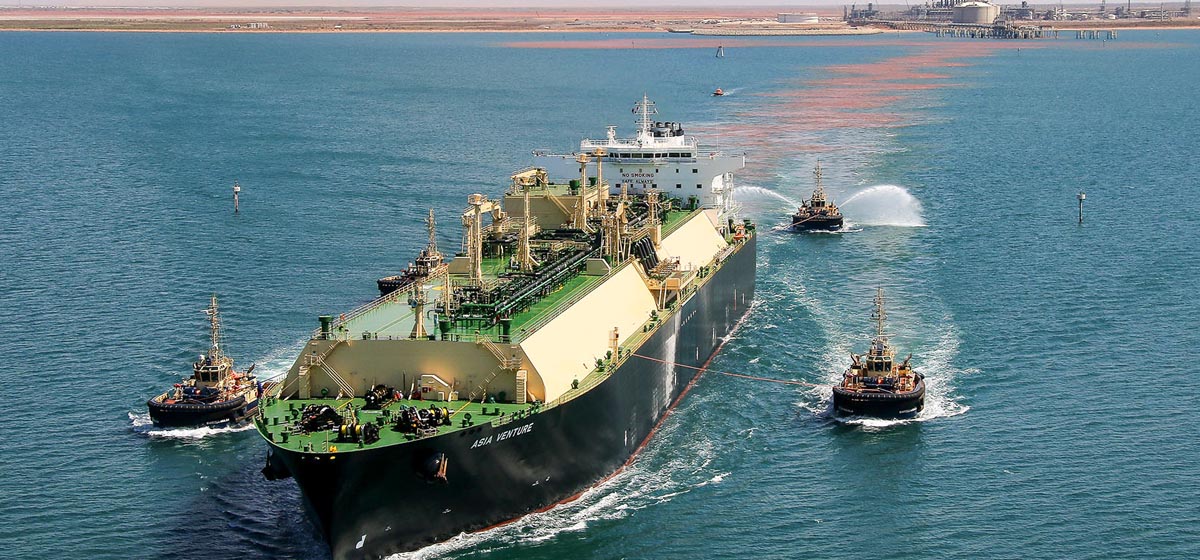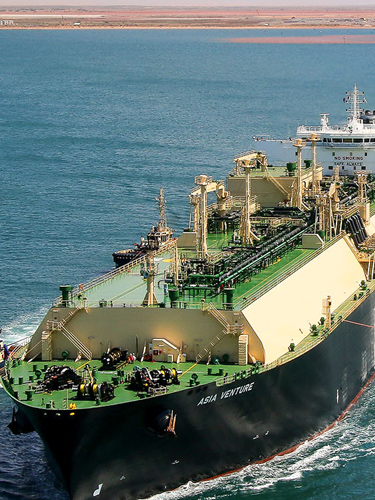

liquefied natural gas (LNG)
safely and efficiently transporting natural gas
what is LNG – liquefied natural gas?
LNG is natural gas that has been cooled to –260° F (–162° C), changing it from a gas into a liquid that is 1/600th of its original volume. This dramatic reduction allows it to be shipped safely and efficiently aboard specially designed LNG vessels.
how is LNG transported?
Chevron’s fleet of specialized ships link worldwide LNG production and regasification facilities to create a safe, reliable and efficient network to transport liquefied natural gas around the world. LNG ships are equipped with sophisticated leak detection technology, emergency shutdown systems, advanced radar and positioning systems, and numerous other technologies designed to ensure the safe and secure transport of LNG.
how do we use LNG?
LNG is returned to a gaseous state at LNG import and regasification terminals around the world. Once it has been warmed to become natural gas, it is dispersed through pipelines for use by homes and businesses. It can be used in a variety of ways: Residential uses for natural gas include cooking, heating homes and generating electricity, while commercial uses for natural gas include heating, generating electricity, manufacturing products like fertilizers, paints and medicines, and occasionally fueling commercial vehicles.
safe and reliable delivery of LNG
how is LNG processed?
Designs of regasification plants include extensive systems to store and process LNG safely.
LNG shipments
118
worldwide import terminals
LNG liquefaction
28
export terminals
storage facilities
100+
LNG is kept until needed
Chevron and the LNG industry provide appropriate security, planning, prevention and mitigation in close coordination with local, state and federal authorities, including the U.S. Coast Guard. These measures significantly reduce risks.
